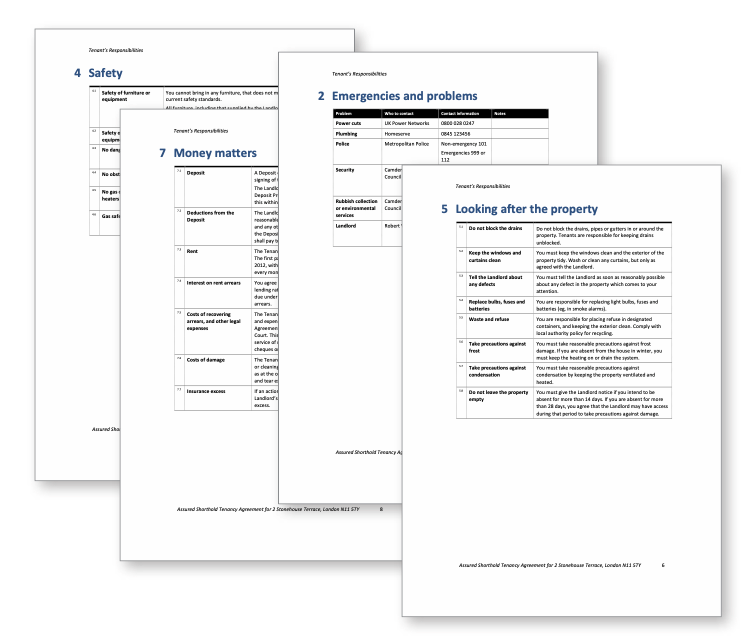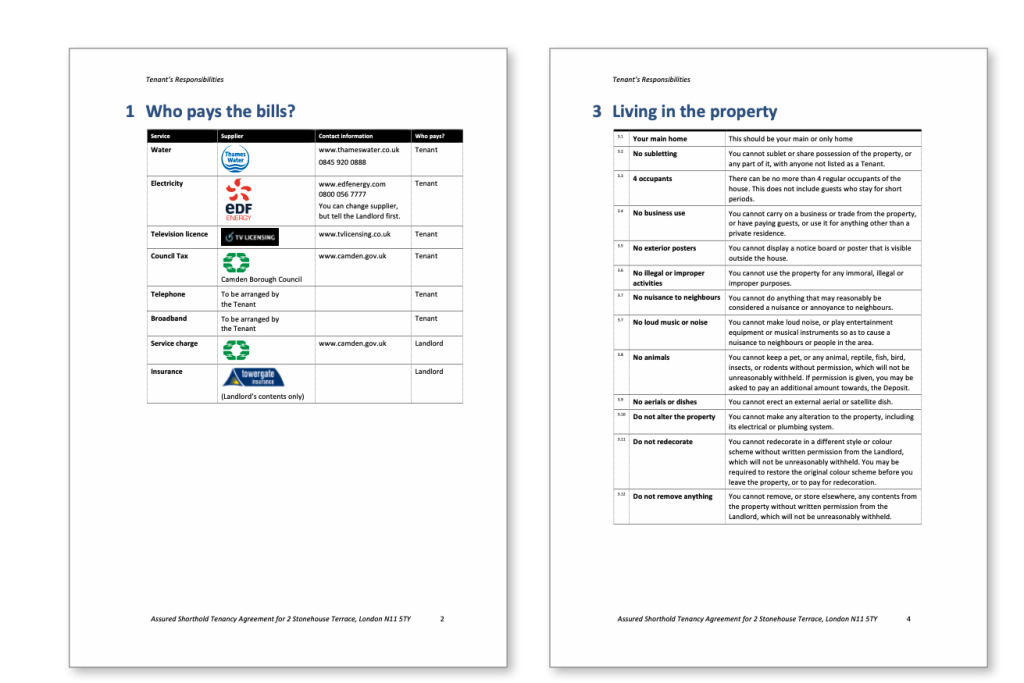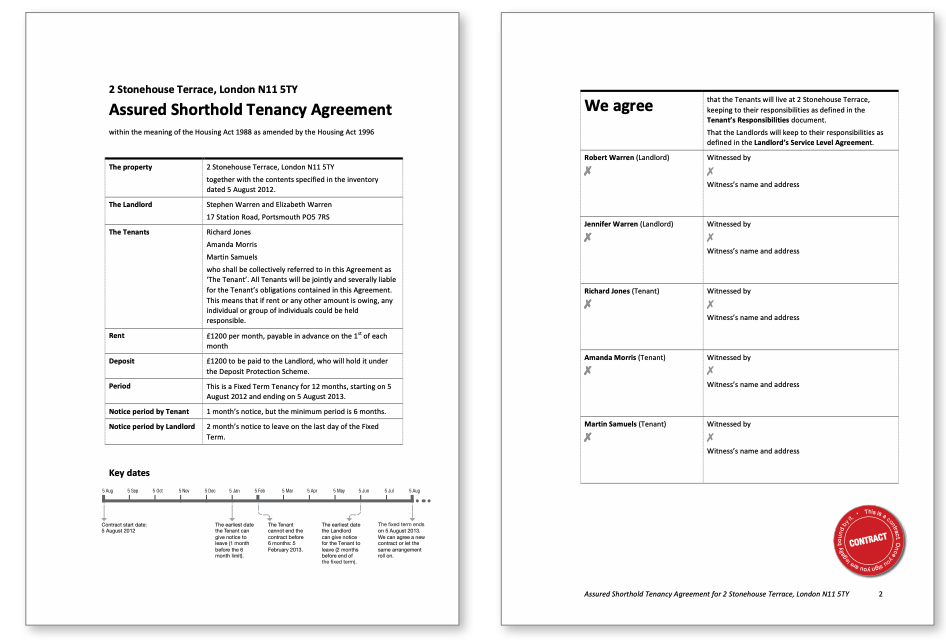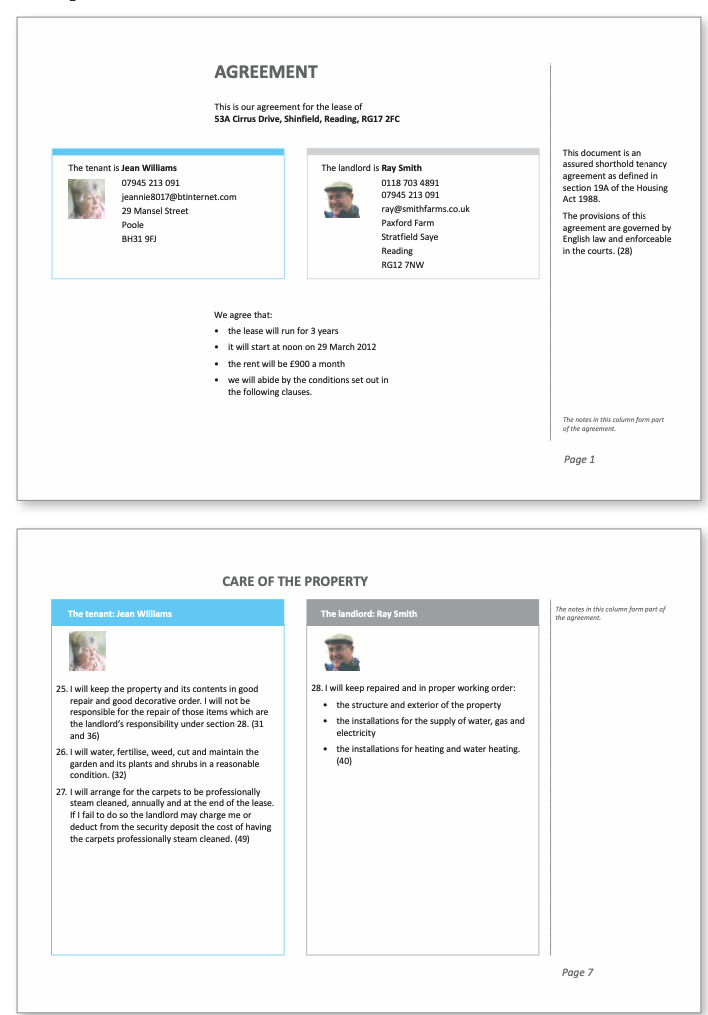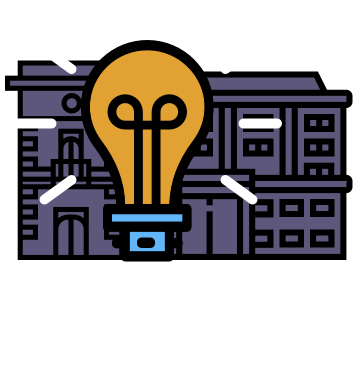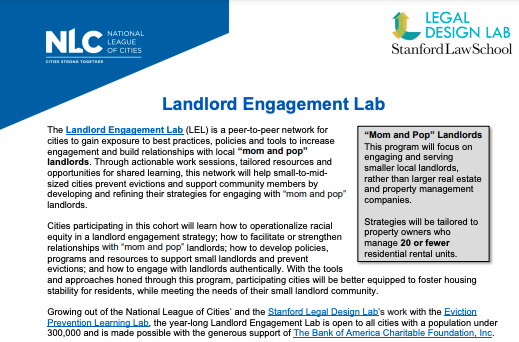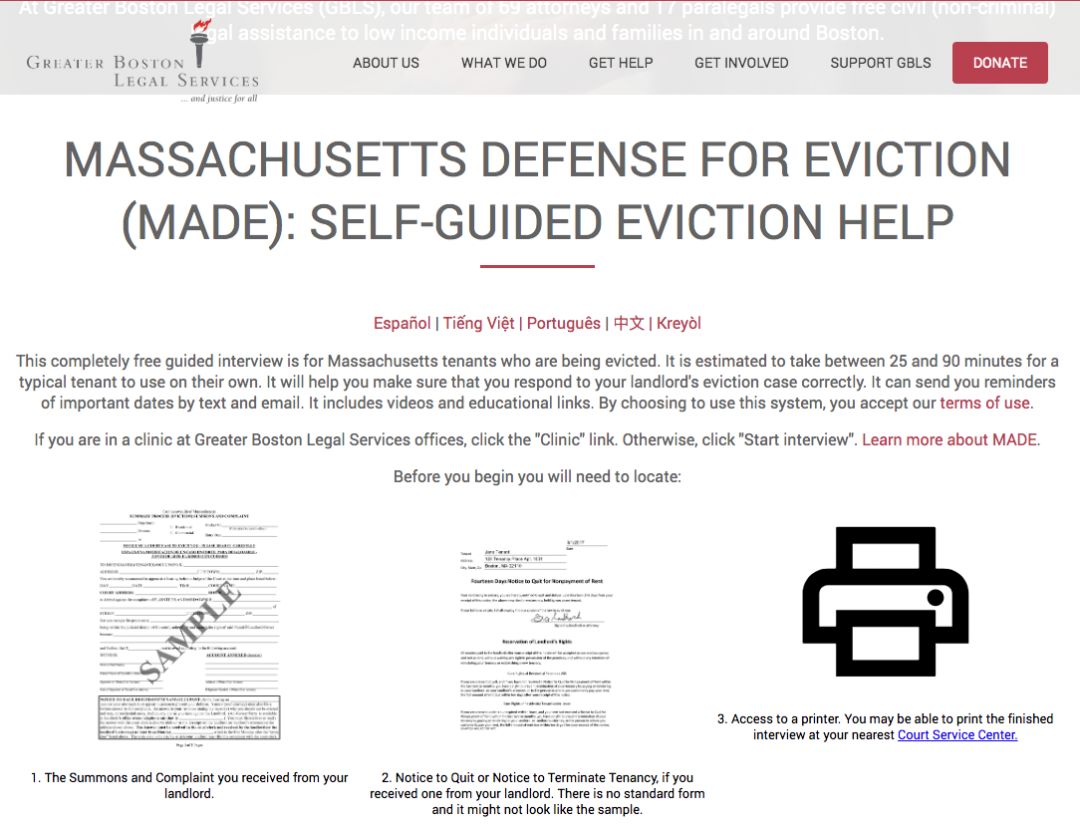The Simplification Centre redesigned a landlord-tenant lease in a design workshop, to improve the agreement and how it sets up the relationship. They have thorough documentation of the possible new lease designs, with explanations of how this agreement could be more proactive, usable, and prevent problems.
The goal of the design workshop was to increase the amount that people would read & regularly consult the lease, and be able to understand it & how it applies. It’s an important document that should lay out rights & responsibilities, and what to do if you are dealing with problems.
In most leases, the key things to do are:
- Identify property and parties
- The time period for how long it lasts, and how it might end
- The money that is needed for rent, deposit, and what happens if it doesn’t get paid
- Rights and responsibilities of both parties, what they can do and not do
So how to lay out these things — and what else should be added in?
The designers looked at existing agreements and found the most common clauses
- Then they grouped the clauses among common sense, clarification, good manners, fairness/resolution of problems
- Agreements are very different! You need to know the differences
- They seem to be randomly created based on individual problems
What would a good lease be like? The best agreement should be clear and navigable – – more than just plain English. It should be a document used regularly throughout the relationship. It is especially important at the beginning & end of a landlord-tenant relationship. Should they even be getting into the relationship at all? And if you want to end it, how do you do it in the least-harmful way?
The Design workshop, learnings & prototypes
The group got together to map and sketch out what a better lease could be. They read through samples, unpacked them, and did extensive sketching to imagine the function & possible layouts of a better lease.
Some design themes that came out:
- Tenancy can be a product. The landlord is the business offering the home. What about the consumer?
- Think through Interfaces to make the contract clauses come alive & be useful. In addition to the written document, also maybe have signs, fliers, and other contextual communications to make those clauses matter when people are in that siutation.
- It should be a relationship enabler. It should help them cooperate, be considerate, and keep a good journey of interactions
- Content might be organized around a timeline, a plan, or another visual pattern to make it clear.
The designers in the workshop came up with two main hypothetical lease designs.
- Option A: A relationship design would have the two parties laid out clearly in the agreement with images, profiles, contact, etc. It organizes all the information & clauses based on the people involved — with their faces, names, and separate columns/colors the guiding design architecture.
- Option B: A functional design can be highly usable with clear layout, timeline, dates, zones of information, and dates. Here the other contract and government design principles can be used in this agreement, too.
